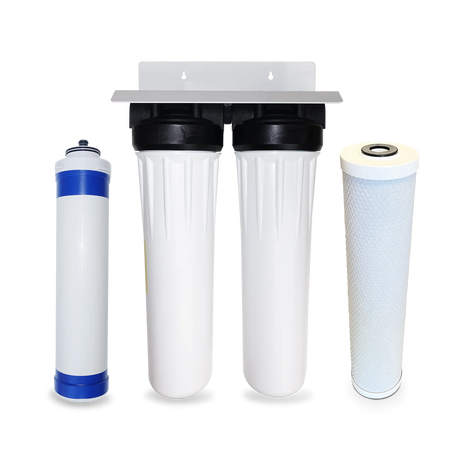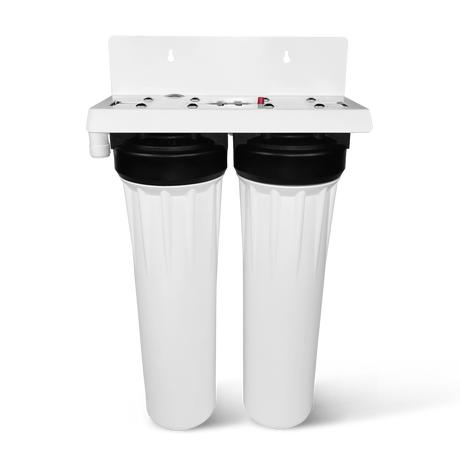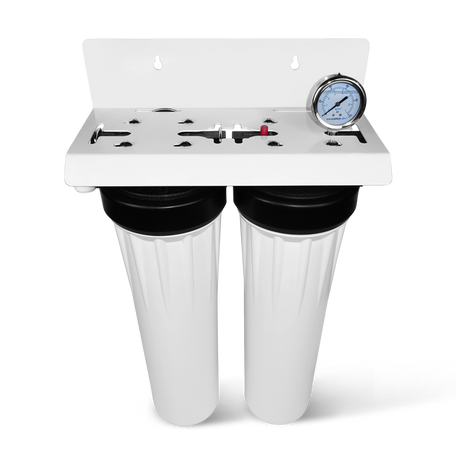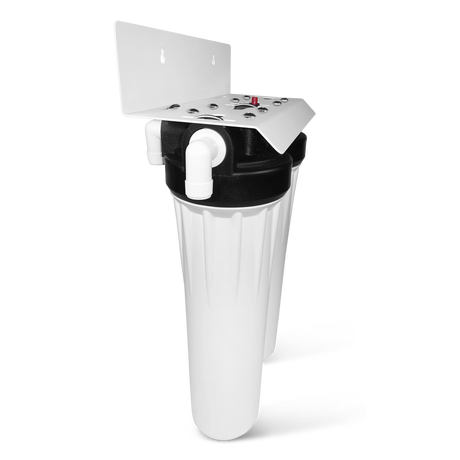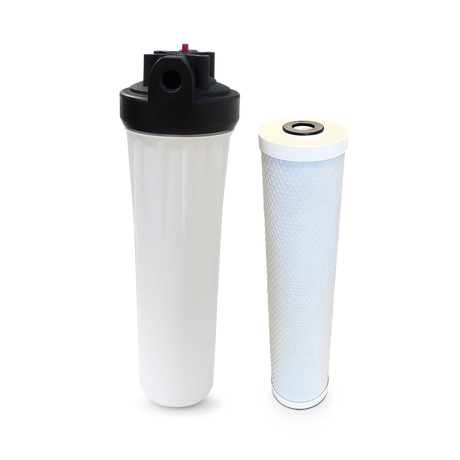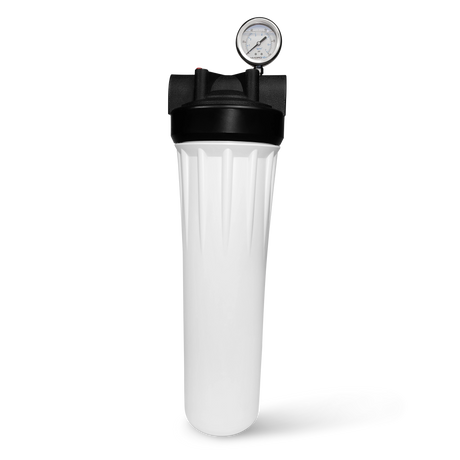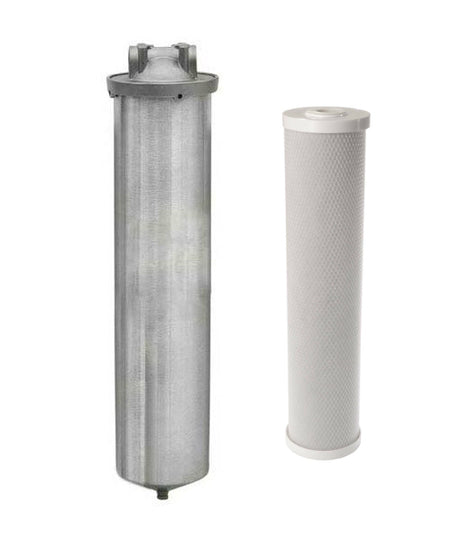PFAS in Drinking Water: How to Detect and Remove These Toxic 'Forever Chemicals
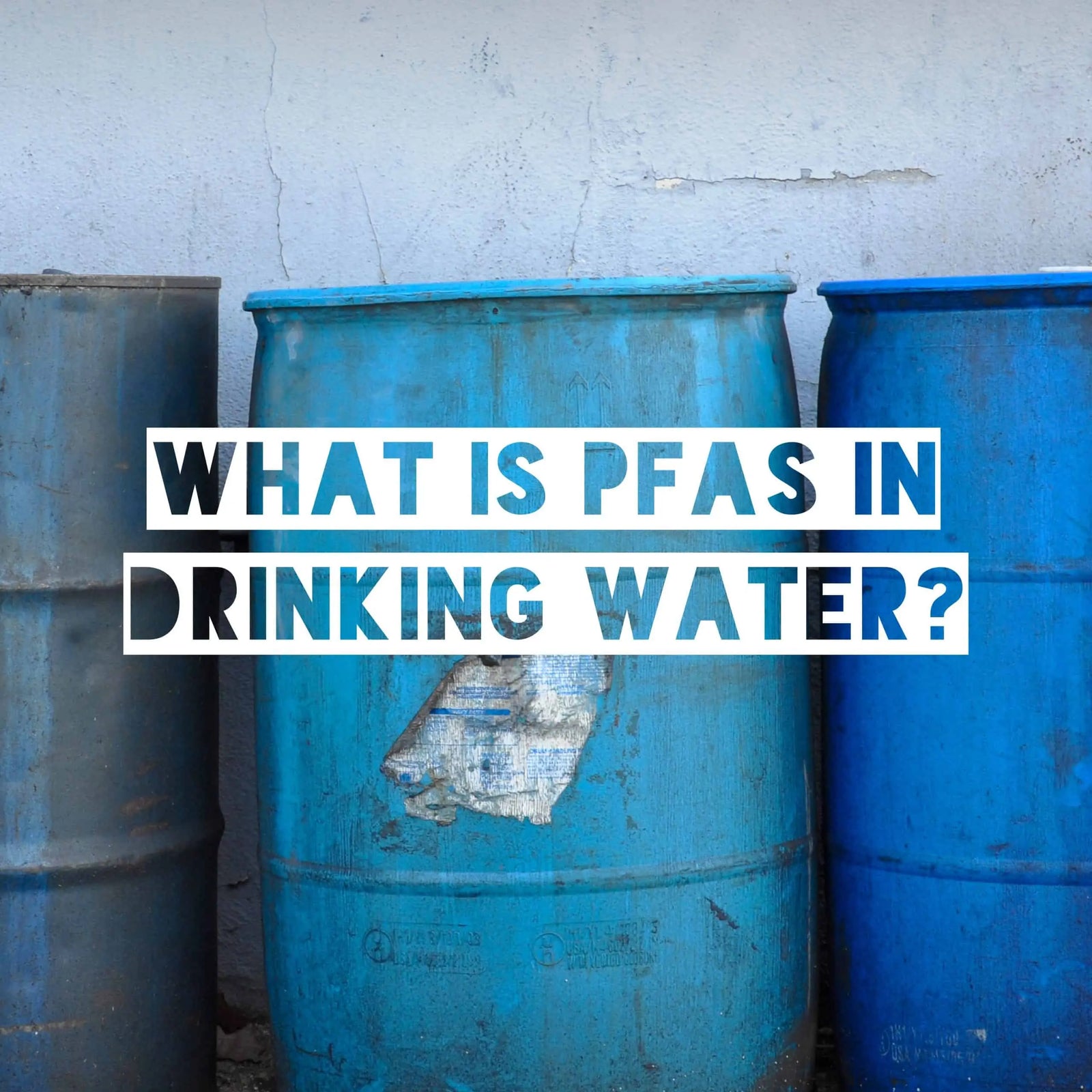
Introduction to PFAS
PFCs, PFAS, PFOA, and PFOS are abbreviations for different but related contaminants that threaten the environment and well-being of people and wildlife. As of January 2021, over 2,300 places in America (49 states!) are known to have PFAS contamination. In fact, PFAS is likely detectable in all major water supplies in America, especially those that use surface water.
Understanding PFAS and Related Chemicals
What Are PFCs?
Perfluorinated chemicals (PFCs) are a group of toxic chemicals most famous for their use in making Teflon non-stick pans. Created in a laboratory accident in 1938 and refined over the following years, Teflon is considered a "miracle chemical" due to its superior nonstick properties. However, perfluorinated chemicals have a toxic legacy.
What Are PFAS?
PFAS - poly- and perfluoroalkyl substances - were previously referred to as PFCs. Although there are almost 5,000 chemicals in the PFAS family, they all have a couple things in common:
- They're man-made chemicals
- They have a carbon and fluorine atom backbone
PFAS contamination is widespread; people and wildlife around the world have been exposed to it, even in the most remote reaches of this planet. These toxic substances have been found in:
- Rivers, lakes, and groundwater
- Public water systems
- Soil and air
- Many types of animals on land and in water
Disturbingly, 99.7 percent of Americans have PFAS in their blood! Scientists call them "forever chemicals" due to their persistence in the environment and our bodies. They're virtually indestructible - sunlight, microbes, and heat won't break them down.
Common Uses of PFAS
Manufacturers use PFAS to make products and coatings that resist heat, oil, stains, grease, and water. Examples include:
- Stain-resistant fabrics and carpets
- Water-repellent clothing
- Nonstick cookware
- Fast food packaging (i.e., pizza boxes)
- Firefighting foam
- Hundreds of other consumer products
What Are PFOA and PFOS Chemicals?
Perfluorooctanoic acid (PFOA) - known colloquially as C8 - and perfluorooctane sulfonate (PFOS) are the most widely studied PFAS chemicals. The largest producers of PFOA and PFOS in America - 3M and Dupont - have discontinued producing these chemicals. However, very close variations of them are still being produced under different names. For example, in 2015 Dupont created a spin-off company called Chemours which manufactures GenX, an alternative to PFOA. Chemours is one of the largest producers of fluorochemicals in the world.
PFAS in Drinking Water: Risks and Regulations
Safe Limits for PFAS in Drinking Water
Independent scientific studies have recommended a PFAS limit of 1 part per trillion (PPT) in drinking water. For water, the EPA provides a health advisory of no more than 70 PPT for PFOA and PFOS combined. To put 70 PPT in perspective, that's roughly 70 droplets in an Olympic-sized pool.
This is only a "guideline" though and not enforceable. 70 PPT is a tiny amount, but our cells do respond to such chemicals at a part-per-trillion concentration. Federal limits don't always mean safe. As Environmental Working Group (EWG) explains:
Legal limits are based on economic and political considerations that usually don't reflect the lower levels that scientists have found pose health risks. Indeed, over 85 percent of the cancer risk calculated in the EWG study is due to contaminants that were below legal limits. Legal limits may also be based on outdated science: No new contaminants have been added to the list of nationally regulated drinking water pollutants in two decades. – Environmental Working Group, 2019
Why Are PFAS Chemicals a Problem in Our Drinking Water?
Hundreds of millions of Americans could have PFAS-contaminated drinking water. PFAS in water are a huge concern because exposure can cause significant, adverse health effects.
Corporations that have knowingly and unknowingly introduced these chemicals to the environment have done little financially or otherwise to fix the problem, leaving utilities and drinking water suppliers with the responsibility and bill, and people with the lasting health effects.
As one scientist points out, water filters are really only a temporary solution to the issue and "the real goal should be control of PFAS contaminants at their source." (Detlef Knappe, 2020).
Health Effects of PFAS in Drinking Water
Exposure to PFAS in water can cause significant, adverse health hazards including but not limited to:
- High cholesterol
- Ulcerative colitis
- Thyroid disease
- Pregnancy-induced hypertension / preeclampsia
- Cancer - testicular, kidney
- Developmental effects to fetuses during pregnancy
- Immune effects
- Thyroid effects
Removing PFAS from Drinking Water
Can Water Filters Effectively Remove PFAS?
Not all water filters completely remove toxic polyfluoroalkyl and perfluoroalkyl substances (PFAS). In fact, only certain water filtration technologies remove or reduce them. Reverse osmosis (RO), activated carbon filtration, and anion exchange treatment are the most effective for PFAS, PFOA / C8 (perfluorooctanoic acid), PFOS (perfluorooctane sulfonate), and PFCs (perfluorinated chemicals).
Keep in mind that the effectiveness of any filter in removing and reducing PFAS depends on the concentration of PFAS in the incoming water, how old the water filter is, size of the filter, flow rate, inlet line pressure, and local water conditions.
Effectiveness of Reverse Osmosis in Removing PFAS
Yes, reverse osmosis is extremely effective at removing PFAS. Research by Duke and NC State scientists found that RO systems were over 90 percent effective at removing a wide range of PFAS. They tested for three perfluoroalkal sulfonic acids (PFSAs), seven perfluoroalkyl carboxylic acids (PFCAs) and six per- and poly-fluoroalkyl ether acids (PFEAs) including GenX. Reverse osmosis had a near perfect removal of these PFAS.
Best Water Filters for Removing Toxic PFAS
Our top picks for removing and reducing toxic PFAS from drinking water:
- HydroGuard reverse osmosis system
- PS-PURUF - 0.02 Micron Ultrafiltration Membrane System with 0.5 micron activated carbon filter for lead / chemicals / heavy metals
Best whole house water filters for removing and reducing toxic PFAS:
- PS-2000PB - 0.02 Micron Ultrafiltration Membrane System with 0.5 micron activated carbon filter for lead / chemicals / heavy metals
- BG-20PB - 0.5 micron activated carbon filter for lead / chemicals / heavy metals
How Different Filtration Methods Remove PFAS
Reverse Osmosis
A high quality, properly maintained reverse osmosis system is the most effective technology in removing the largest number of contaminants including PFAS. An adequate RO system consists of a sediment filter (5 micron or less), carbon filters (5 micron or less), and an RO membrane.
Reverse osmosis is intended for drinking water (point-of-use basis), and not a viable option to treat all of the water used in your home unfortunately. This is because it typically "wastes" three or more gallons of water per one gallon of RO water produced, and would require an extensive tank since water is not produced on demand (tanks are prone to bacteria growth which is also an issue).
Activated Carbon Filters
Some activated carbon filter systems remove or reduce certain PFAS concentrations in drinking water. There are many types and sizes of carbon filters, however most are designed for taste and odor issues rather than for PFAS.
The most effective activated carbon filters for PFAS removal are:
- High quality, low micron activated carbon block filters (best choice)
- High quality, low micron granular activated carbon filters (GAC)
Activated carbon block filters are more effective than GAC filters because carbon block filters have a much larger surface area. The larger surface area means greater capabilities in filtering out particles, heavy metals, and contaminants, and they can filter more water.
Multi-Stage Ultrafiltration Systems
Ultrafiltration membrane filtration removes particles on a microscopic level and combined with an activated carbon block filter, it will remove and reduce PFAS. Although an ultrafiltration membrane is not as fine as reverse osmosis (it filters to approx 0.01 micron), it can provide benefits over RO while still providing protection from PFAS.
Anion Exchange Treatment
In an ion exchange treatment, undesirable ionic contaminants including PFAS (negative charge) are attracted to an anion exchange resins (AER; positive charge), removing them from water. This type of water treatment is not as readily available as the other types of treatment for PFAS.
Protecting Yourself from PFAS Exposure
Reducing PFAS Exposure in Daily Life
Avoid purchasing or, at a minimum, limit use of products containing PFCs. PFAS are biopersistent, meaning that once they are in the body, they stay there for a long time rather than being completely broken down or expelled quickly. They also bioaccumulate (accumulate over time) and biomagnify (transfer through the food chain).
PFAS in Tap Water
It's very concerning, but yes, your tap water may have PFAS. To know for sure if your tap water has PFAS, you will need to test for it, as not all municipalities test for PFAS and report it.
Removing PFAS from Your Home's Water Supply
A suitable water filtration system will remove or reduce PFAS from your water. High-pressure membranes (reverse osmosis, nanofiltration, ultrafiltration), activated carbon filtration, and ion exchange treatment are the most effective at removing PFAS from water.
Common water pitcher brands like Brita and Pur are NOT designed to remove or reduce PFAS in your tap water. It's also unlikely that fridge water filters are effective against PFAS.
Why Boiling Water Doesn't Remove PFAS Contaminants
If your water contains PFOA, PFOS, or other PFAS do NOT boil your water. Boiling it will actually concentrate the toxic chemicals posing even greater health risk. Heat doesn't break down PFAS.
What to Do During a PFOA, PFOS, or PFAS Water Advisory
Please follow advice from your local water authority during the advisory. If you have a water treatment system that removes and reduces PFAS, then you should not be alarmed. However, make sure you're using this filtered water for all activities that may result in ingestion, including:
- Drinking
- Cooking
- Bathing
- Brushing your teeth
- Dish washing
- Giving water to pets
How Long Do PFAS Stay in Your System?
PFAS stay in your body for a long time. This is because PFAS are biopersistent - they don't break down or get expelled from your body quickly. Depending on the level of exposure, they may stay in your blood levels for your entire life.


